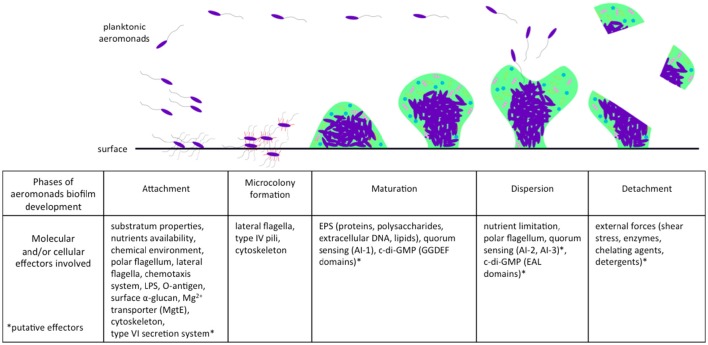Figure 1.
Effectors involved in different phases of biofilm development in aeromonads. Planktonic aeromonads initiate the formation of biofilm on surface under influence of environmental conditions. Several bacterial factors are involved in the attachment step, including flagella and other external structures, chemotaxis system, and cytoskeleton. After division, bacteria that were well-aggregated, attached to the surface to form a microcolony. Biofilm acquires its mechanical stability by the production of an EPS matrix encompassing proteins, polysaccharides, extracellular DNA, and lipids. The AI-1 quorum sensing system enhances the maturation of biofilm, which is likely related to the second messenger c-di-GMP involved in the bacterial transition from planktonic to sessile lifestyle. When the conditions of life in biofilm deteriorate (e.g., nutrient limitation), a dispersion phase occurs and aeromonads escape from biofilm and return to the planktonic lifestyle. In another case, the biofilm can be detached by external stress (e.g., shear forces). AI-1, Autoinducer-1 quorum sensing system; AI-2, Autoinducer-2 quorum sensing system; AI-3, Autoinducer-3 quorum sensing system; EAL, protein domains harboring phosphodiesterase activity involved in the c-di-GMP degradation; EPS, extracellular polymeric substances; GGDEF, protein domains harboring guanylate synthase activity involved in the c-di-GMP synthesis; LPS, lipopolysaccharides.

